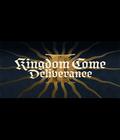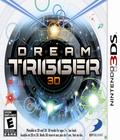The launch of a console is a very exciting time for gamers since they get to see a variety of games attempt to take advantage of the new hardware. Some games are simply versions of recently released games that have been designed to stand out in a small way. Others are sequels of established franchises that are riding the wave and hoping to bring good sales to the new hardware. The most exciting launch titles are brand-new ones that aren't tied to a known game or property. These games usually have to do something very different or come up with such an exciting hook that people who are wary of new IPs would be willing to give them a chance and hopefully spawn a new series or franchise. Such is the case with Dream Trigger 3D, a new game from D3 Publishing for the Nintendo 3DS. Does the game entice people into giving it a look?
The game mechanics are very different than what you're used to seeing. Instead of controlling a ship, you control a reticle that can take on any shape at any given stage. Unlike other shooting games, enemies are invisible in Dream Trigger 3D, and even if you see a hint of where they are, shooting at it does nothing. You need to uncover the enemy locations using sonic pings. Laying down the ping simply sets them up while a bar, timed to the beats of the level's song, sweeps over to detonate them. If an enemy is in the vicinity of the sonic ping's blast radius, the enemy is then revealed and can be shot. Shooting also gives you temporary invincibility, which proves to be useful when the screen is filled with bullets. To prevent rampant pinging and blasting, however, the sonic pings and laser blasts have limits, and while the pings regenerate over time, the laser energy is only refilled when one of the pings successfully uncovers an enemy.
In a way, the game is much like a mix between Rez and Lumines in terms of how it tries to change the perceptions of what a shooting game can offer. Painting the screen with pings and watching them detonate at structured time periods almost gives you the feeling that you're making music while you're taking out enemies. That sense of rhythm also becomes the backbone for how the game is played. With the exception of boss fights, enemies always seem to travel in specific patterns that encourage the player to place pings in certain patterns and intervals to optimally reveal all of the enemies at a given time. Players who figure out the rhythm are more likely to score higher point totals than those who simply spread out those pings with no rhyme or reason.
Dream Trigger 3D features four different modes. World Map serves as the main campaign mode; you have to travel from one world to another, completing the levels and challenges to unlock the game's 55 levels. These levels are split up by nine different worlds, and access to each one is governed by movement points, which are earned through the completion of each level. Instead of being a linear experience, though, you can travel to each area via an overhead map.
Upon playing the first level, you come across the game's biggest caveat: the rather high level of difficulty. Unless you have a knowledgeable player show you what to do or you've watched extensive videos, you won't know exactly what to do. Even then, it may take a half hour to fully understand the first level. Since death sends you back to the main menu, the level of frustration builds up even though there aren't any load screens. For those who feel the tutorial would be enough, prepare to be disappointed because the tutorial doesn't fully prepare you for everything to come. Even though it talks about things like invincibility and how to uncover enemies, the tutorial doesn't give you a real chance to practice the basics, further leading you to believe that this game may be too difficult to grasp.
Free Play mode lets you play through any of the 55 unlocked levels to get the highest possible score. Unlike the World Map mode, the layout is more linear, and one can navigate through it without having to resort to the touch-screen. Time Attack does the same, but you're racing to complete levels as quickly as possible. Both modes are good, but the leaderboard is disappointing. The game just records a general leaderboard score, and you can't facilitate a local competition since there's no way to personalize your score entry. There's also no way to upload your scores to an online leaderboard, so unless you thrive on beating your own scores or can easily remember other people's scores, you might not play these modes for too long.
The final mode, multiplayer, also tries to do something different than what you're used to seeing. The local wireless mode has you and an opponent trying to outscore each other in any given area. What's interesting is that your opponent will take on the same traits as the enemies and be invisible from your view. Unlike enemies, a successful sonic ping on your opponent's location will end up stunning him, so you and enemies can land some free hits before the stun wears off. Having online multiplayer would have helped make this mode more interesting, but for what it's worth, this mode is a pretty good time waster.
No matter which control scheme you choose, the controls will feel a bit off. Movement with the d-pad is restrictive, but moving with the circle pad doesn't feel any more fluid. Instead of feeling like an analog stick with smooth and quick movements, it feels like a more comfortable d-pad. Another issue comes from the use of buttons to deploy the sonar pings. Unlike the touch-screen, which lets you deploy one ping in a given area, the A button deploys several pings in a row to the reticle's current location. Considering that the user has a limited amount of pings at his or her disposal before it's refilled, the dropping of a multitude of pings in a given area almost seems like the button is being oversensitive.
Graphically, Dream Trigger 3D is sparse, and while most players may consider that to be a bad thing, it's quite the opposite. The backgrounds range wildly from fantasy landscapes to beautiful nature shots to everything being comprised of lights and vector lines. The enemies and your aiming reticle change to fit the new theme and don't look too bad. Bosses are a different story, though, as they don't feel as imaginative as their environments. The look decent but are certainly a low point as far as the visuals are concerned.
Very few games in the early library for the 3DS really show off the benefits of 3D, but this title is an exception to the rule. The depth make the environments stand out more since they look like they exist on a completely separate plane, with enemies and bullets taking over the foreground. That spatial recognition makes the game look much better than the 2-D version and makes it even more interesting when enemies pop into the foreground because the sonic pings have ferreted them out. It also helps with the special icons that float around to give you special abilities. While their translucency — or lack thereof — can usually hint if you can pick them up or not, seeing them in regards to their depth provides much more immediate feedback for the user.
The sound is decent enough. The music and sound effects come together to provide a nice, unexpected melody if you find your groove and play things right. Even if you don't, the effects are solid. The music isn't as memorable as other, similar works, but it fits the levels well. While the melody doesn't give in to exciting fare too often, there are a few times when it feels too calm unless you're performing some kind of action.
In the end, Dream Trigger 3D will likely become a title with a niche following. The relatively high level of difficulty will likely turn off most players, especially since you experience it in the first level of the game. Once you finally understand how everything works, it becomes interesting. The game can feel a little long in the tooth considering that nothing new is introduced later, but at least the new backgrounds and themes keep things somewhat fresh. Considering how polarizing it is, the game is best recommended as a rental to see if you can deal with the high difficulty level and enjoy what's here or simply give up out of frustration.
Score: 6.5/10
More articles about Dream Trigger 3D












 Dream Trigger 3D is a completely original arcade shooter in which players use sonar to detect sound to expose colorful enemies and blast them into explosive 3D patterns.
Dream Trigger 3D is a completely original arcade shooter in which players use sonar to detect sound to expose colorful enemies and blast them into explosive 3D patterns.














